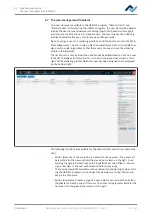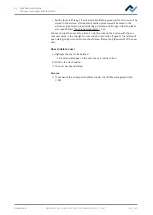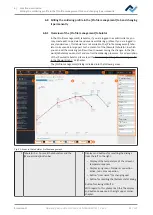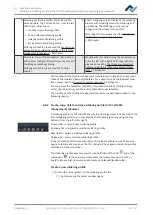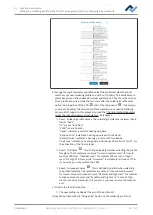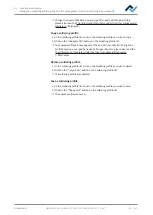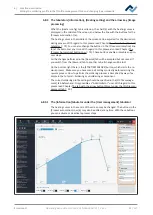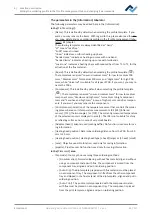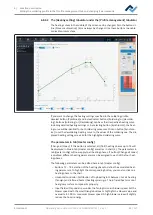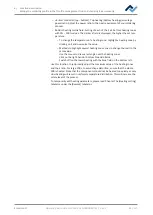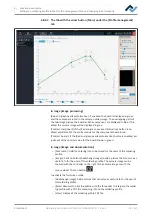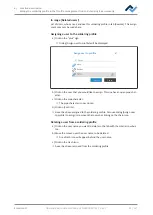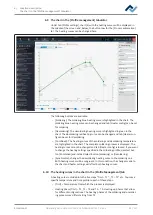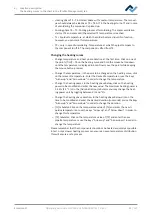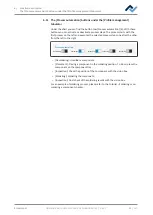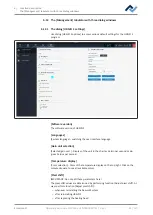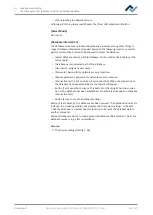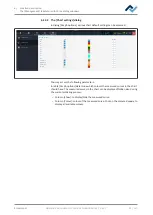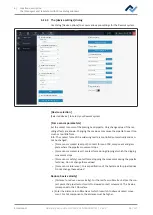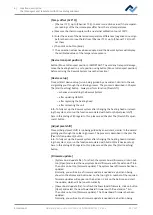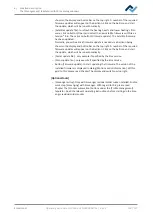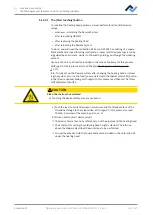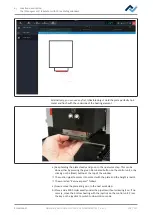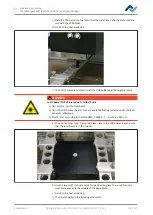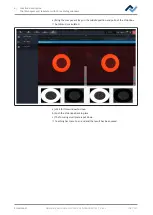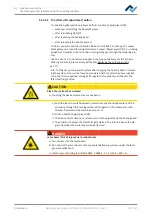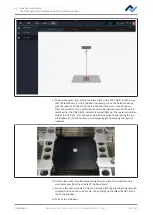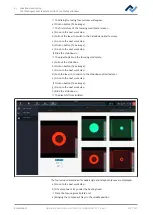
6 | Function description
The heating curves in the chart in the [Profile Management] tab
– Heating phase T3 – T4: Hottest phase with constant temperature. The two val-
ues should always be identical: T3 = T4. At T4, the heatings turn off, and in case
of unsoldering the component is picked up.
– Cooling phase T4 – T5: Cooling process after soldering. The cooler ventilation
starts at T4 and cools until the selected T5 temperature is reached.
– TL = liquidus temperature, at which the solder becomes liquid. No function;
however, you can mark this temperature.
– TP = only in case of unsoldering. Temperature at which the pipette moves to
the component to lift it. The component is lifted from T4.
Changing the heating curves
– Change temperature and heat phase duration at the first time: Click on one of
the points [Tinit] – T5 on the heating curve and hold the mouse button down
until the temperature is displayed in bold. Now move the point while keeping
the mouse button pressed.
– Change the temperature: In the point to be changed on the heating curve, click
on the relevant temperature. Enter the desired temperature or use the keys
“Arrow up” and “Arrow down” in order to change the temperature.
– Change the heating power: In the heating phase below, click on the heating
power to be modified and enter the new value. The maximum heating power is
2.5 K/s (2.5 °C/s). In the [Administration ] tabulator you may change the heat-
ing power unit by toggling between K/s and °C/s.
– Change the heating phase duration: In the heating phase below click on the
time to be modified and enter the desired duration (in seconds) or use the keys
“Arrow up” and “Arrow down” in order to change the duration.
– [TL] tabulator: Click on the temperature value of [TL] and enter the new li-
quidus temperature or use the keys “Arrow up” and “Arrow down” in order to
change this temperature.
– [TP] tabulator: Click on the temperature value of [TP] and enter the new
pipette temperature or use the keys “Arrow up” and “Arrow down” in order to
change the temperature.
Please remember that the components should not be heated as quickly as possible:
in fact, only a slower heating process can ensure an even temperature distribution.
This will ensure a safe process
Ersa GmbH
Operating instructions HR 550 XL EN 3BA00247-01 | Rev. 1
93 / 157

